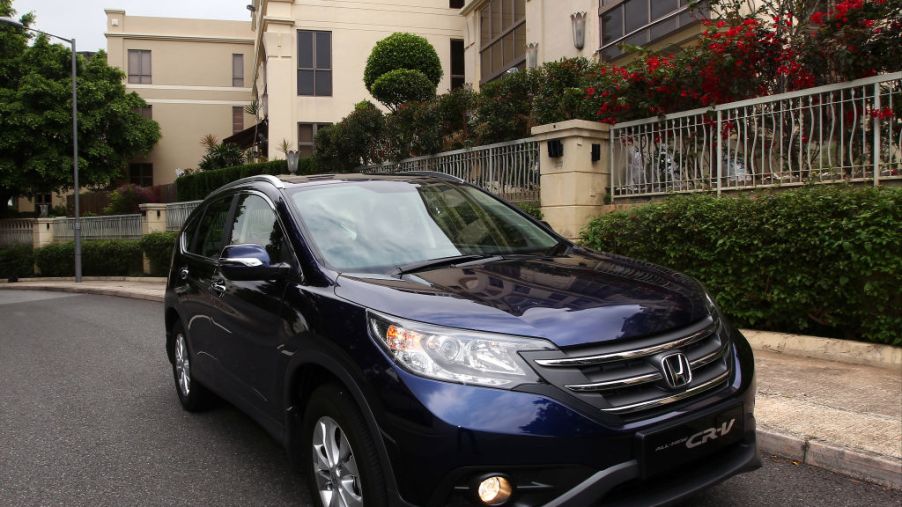
The 2015 Honda CR-V Has a Problem That Drives Owners Crazy
When the 2015 Honda CR-V came out into the market, people lined up to get one. And why not? Honda had announced some new improvements with that model year that promised to be impressive. Better fuel economy was a game-changer for them with their new 2.4-liter 4-cylinder engine and Continuously Variable Transmission, or CVT.
Add to that some nice styling tweaks and a few new tech features for the interior, and Honda had a dream vehicle that people have waited a long time for. However, it turned out to be more of a nightmare for owners as CarComplaints.com shows on their website.
So, what exactly is the problem with the 2015 Honda CR-V?
Drivers started noticing a vibration that would show up when they were in gear, but stopped at a stoplight or stop sign. When they go to drive again, it would quit. Over time, the vibration would get worse, and they could feel it in the steering wheel, driver’s seat and even in some of the passenger seats.
Many Honda dealerships heard these complaints, but would often try to explain it away as being “normal” vibration from the four-cylinder engine. Other complaints started coming in from drivers who also experienced the vibration when in motion going 60-70 mph.
Some CR-V owners even complained that the vibration was so severe, they were getting headaches and backaches from it, not to mention nausea. That’s what ultimately led to a lawsuit filed in 2015 that claimed Honda knew of the issues but sold the vehicles, anyway.
The cause of all the headaches, literally
Hondaproblems.com explains that Honda wanted to increase the fuel economy for the CR-V, to compete with other SUVs. To do this, it rolled out the 2015 model year with a redesigned engine, known as the Earth Dream.
This motor could get 33 mpg, which is about 3 more miles than the previous year could do. The direct-injected 4-cylinder engine, paired with a CVT, worked by lowering the engine’s RPMs while at idle or at low speed.
However, it caused vibration and sometimes noise. Continuing to drive it like that without addressing the issue, would make the vibration get worse to the point where it almost shakes the vehicle apart, or so it would seem. CR-V owners not only found the shaking nauseating, but it was a major distraction on the road.
Is the 2015 Honda CR-V doomed or can it be fixed?
Honda released a technical service bulletin to address the vibration issues. It explains three different modes where drivers experienced the problem and the repair suggestion for each one.
For those who have a vibration when they’re stopped with the vehicle in gear, Honda recommend technicians replace the radiator cushions, mounts on the transmission, and the front head restraints.
When the vehicle vibrates when accelerating at around 1,000-1,200 RPMs, Honda suggests two things. You should have a PCM, or Powertrain Control Module, update and a tailgate damper lift kit installed to balance the vehicle.
If you only notice the vibration when their vehicle is at an acceleration of 1,800-2,200 RPMs, they recommend that you just have the PCM update done. Many of the 2015 CR-V owners, who had the repairs done haven’t reported the issue anymore, but there are still some that continue to have problems.
It’s also important to note that the 2015 Honda CR-V is not the only one to have this complaint. Some 2016 CR-V drivers have the same problem with their vehicles, but there aren’t as many. The good news is that owners of the 2017 and newer Honda CR-Vs no longer report it, so hopefully, it’s now a thing of the past.


